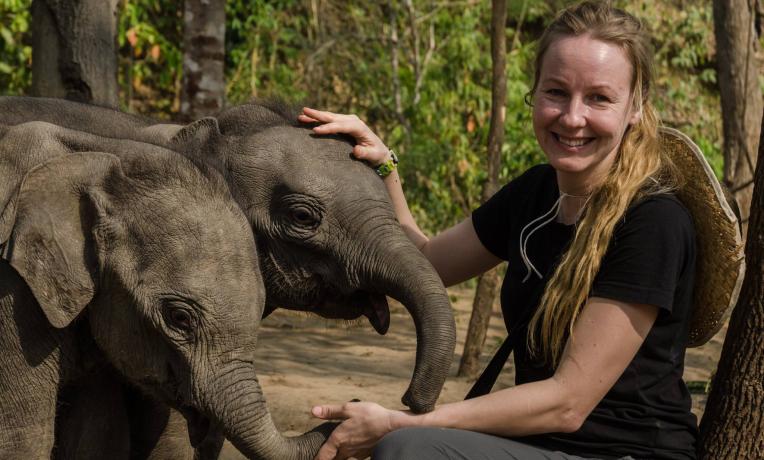Wild elephants under threat
Based on University of Turku's press release
For more than 3000 years, men have captured wild Asian elephants to use them for work or entertainment. In a new study published today in Nature Communications, ERC grantee Virpi Lummaa shows the harmful effects of these ongoing practices on wild-caught animals. The findings are based on detailed records from the past 100 years over a population of 5000 timber elephants from Myanmar.

Each year, many animal species are captured from the wild for different purposes. While some wild species seem to be healthier, longer-lived and produce more offspring in captivity than their free-living counterparts, elephants show a different reality. They are at a much higher risk of dying in zoos compared to the wild. This could be explained by the differences between the wild environment and the zoos in terms of diet, social interaction, room for exercise and disease patterns. But how are wild elephants affected by their capture and how does this impact their long-term performance in captivity?
Watching this video you are accepting Youtube cookies policy
Lummaa's team, at the University of Turku in Finland, together with a team of researchers from the Leibniz Institute for Zoo and Wildlife Research in Berlin, Germany, have looked into this question. They have analysed detailed records from the past 100 years, studying over 5000 Myanmar timber elephants used in the logging industry. Their research focused on the long-term effects of different capture methods on the elephant's survival in logging camps, where wild-caught and captive-born animals work and live in forests side-by-side.
Greater mortality, shorter lives
"We found that wild-captured elephants had lower survival than captive-born elephants regardless of their capture method: stockade of whole groups of elephants, lassoing the chosen elephant or immobilization by sedation. This means that all these methods had an equally negative effect on the elephant’s subsequent life", explains ERC grantee Virpi Lummaa.
Older elephants suffer most from capture and have lower survival than elephants taken at younger ages, according to the study. All elephants had the highest risk of death in the year immediately following capture, and although this decreased thereafter, these negative effects last, alarmingly, for about ten years.
The findings rely on data from timber camps where both wild-caught and captive-born elephants have very similar life styles. There, both captive-born and wild-captured timber elephants live together in a semi-captive regime. While they work together during the day, at night they are released into the forests to find food and to interact with their peers. This unique situation makes the comparison between these two groups unbiased by other factors such as diet or exercise. Moreover, all elephants are subjected to the same governmental regulations concerning data recording, workload and rest periods. Both captive-born and wild-caught elephants are tamed and trained before entering the workforce, although wild-captured elephants may be exposed to harsher treatment depending on their age, sex and personality, compared to captive-born calves which are tamed around the age of five.
"Overall, the long-term costs of capture and taming resulted in a median lifespan that was 3-7 years shorter than captive-born elephants. Consequently, the practice of capturing elephants for sustaining captive populations is not only detrimental because it reduces wild populations of this endangered species. It also fails to provide a viable solution for sustaining captive populations because these wild-caught animals live shorter lives and reproduce poorly in captivity", says Lummaa.
Potential reasons for the shorter life of wild-captured elephants is the long-term stress from capture and taming as well as changes in their social environment. The study stresses the need for alternative methods to boost captive populations in elephants, as even today, over 60% of elephants in zoos were originally from the wild and about one third of all remaining Asian elephants live in captivity. The researchers also call for further studies to assess the negative effects of capture across species. When these practices are unavoidable, suggests the study, animal welfare specialists, veterinarians and ecologists shall join forces to support the animals, especially immediately after capture, which is the most critical period.
Virpi Lummaa holds an Academy of Finland Professorship at the University of Turku, Finland. She is interested in how evolutionary, ecological and demographic factors shape ageing, lifespan and natural selection. At present, Prof. Lummaa focuses on senescence patterns of the Asian elephant, a long-lived mammal that offers unique opportunities to address ageing mechanisms. Her latest findings highlight the significant and long-lasting role that the stress associated with capturing elephants from the wild plays with their subsequent health and survival in captivity.






